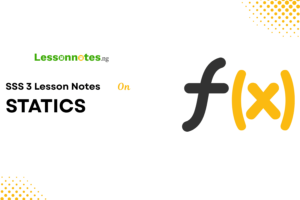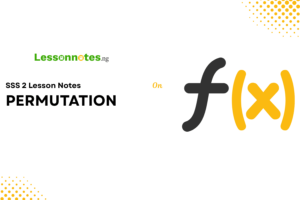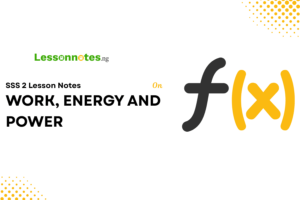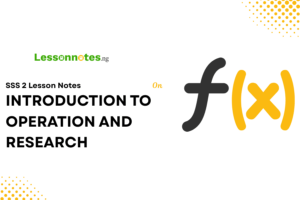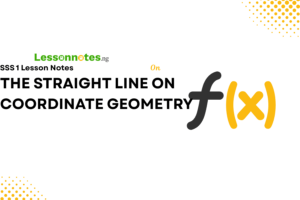Modelling SS3 Further Mathematics Lesson Note
Download Lesson NoteTopic: Modelling
DEFINITION OF MODELLING
Modelling in Mathematics is the application of mathematics to real-life situations.
USES OF MODELLING IN MATHEMATICS
- Industry
- Commerce
- Government
- Weather forecasting
- Health institution
- Educational institutions etc.
AREAS MOSTLY USED OF MATHEMATICAL MODELLING
- Predictions of population growth
- Financial business (stock trading)
- War and conflicts
- The spread of diseases and epidemics.
MODEL: A model in Mathematics is a concept that represents a real-life situation. This is developed to help in the understanding of the physical phenomena, such as: making observations, collecting data and carrying out an experiment.
EXAMPLES OF MATHEMATICAL MODEL
- Theory of Malthusian population growth. i.e. ( the rate of food is growing arithmetically while the population is growing geometrically)
- Household financial budget
- Geographical projection of an area or region on earth’s surface.(planning).
- The behaviour of consumers’ choice in the prices of commodities.
VARIABLES
There are basically six variables in Mathematical modelling. I.e. Output variables, input variables, random variables, decision variables, state variables and exogenous variables.
DEPENDENT VARIABLE: This represents the output or outcome whose variation is being studied to see if and how much it varies as the independent variables vary in the simple stochastic (randomly determined) linear model. i.e. = a + + . The term is the ith value of the dependent variable, is the value of the independent variable and is the error and contains the variability of the dependent variable not explained by the independent variable.
INDEPENDENT VARIABLES: These are the inputs or causes (potential reasons for variation). i.e. x is input and y is output. Y = f(x). for multiple independent variables z = f(x,y). = a + + + …+ + . Where n is the number of independent variables.
ASSESSMENT: New Further Mathematics Project 3, page 225, exercise 15, questions 3, 4, 6 and 7.
EXOGENOUS VARIABLE: These are independent variables that affect a model without being affected by it, and whose qualitative characteristics and method of generation are not specified by the model builder. An exogenous variable is used for setting arbitrary external conditions and not in achieving a more realistic model behaviour.
CONSTRUCTION OF MODELLING AND ITS APPLICATION.
CONSTRUCTION
Let x(t) be the amount of substance still present at time t. Differential calculus is the time rate of change of decay. Then, the time rate of change is proportional to x. i.e. = kx…..(i)
EXAMPLE
Observations have shown the rate of change of the atmospheric pressure. Given that the pressure at 6000 m above the sea level is half its value at sea level. Find the formula for the pressure at any height h.= In = kh +c
P = P = , (A = )
= A…..(i)
When the height (h) is zero
= A = A
Therefore, at height (h) = 6000m
P =
= P =
= 1 (formula for the pressure at any height h).
ASSESSMENT: Work out the following questions: New Further Mathematics project 3, page 224, Exercise 15. Questions 3,9 and 10




